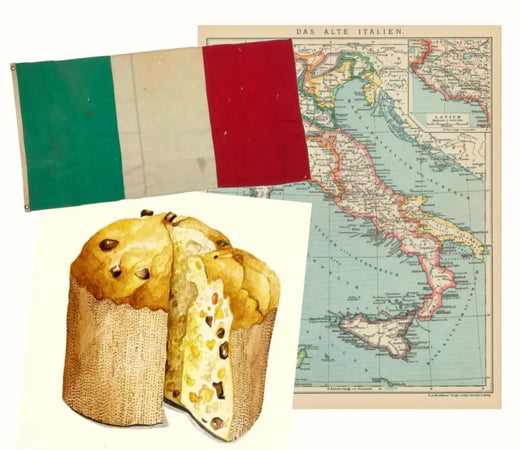The Sweet Traditions of Holiday Desserts

Here's something you may have not heard in the past few days:
Happy Holidays!!!
No, but really, Happy Holidays, with all they entail. Beautiful memories and moments with loved ones, absolute indulgence, lots of everything, reflection, love. All of it. All of us at Laroot World are about abundance, and that’s what we wish you this beautiful coming year...abundance of mind, abundance of soul, and, of course, abundance of delicious food.

BUCHE DE NOEL
I wanted to share a fun learning from around the Christmas table just a few days ago, in Paris. As the delicious meal was coming to a finish, around me, everyone was very excited to have the special dessert of the night. My family kept going on about the special Bûche that was about to be served. So I asked my very Parisian family around the table, why do you eat Bûche for Noël? What is the significance?
The Bûche originated as a Yule log tradition, I discovered. Before modern heating, ancient European families would celebrate the winter solstice by burning a large log in the hearth. The log symbolized warmth, light, and protection from darkness during the long winter nights. Families often chose the largest, most robust log and decorated it with greenery or ribbons.
Somehow, by the 19th century, the log transformed into a dessert, also mightily decorated and bringing families together for a beautiful moment of sweetness and light. The Bûche de Noël (a dessert in the shape of a decorated tree log) to this day represents the festive warmth and light of a burning log.

PANETTONE
This naturally brought me to the next question: And what about panettone? How did this extraordinarily shaped sweet bread become a Christmas staple?
The romantic in me was delighted to find out that there is a love story legend attached to this cake. How Italian!
The tale involves a nobleman, Ughetto degli Atellani, who fell in love with a baker’s daughter. To impress her father, he disguised himself as a baker and invented panettone, which brought fame and success to the bakery. Why is there no movie about this??

Meanwhile, in the Philippines, if one is by a church around Christmas time, it is impossible not to indulge in Christmas Bibingka, a delicious dessert that showcases Filipino ingenuity in mixing the indigenous flavors with those brought over by colonial powers. A delightful indulgence of mythical status to be eaten for 9 days preceding Christmas during the Catholic Filipino Simbang Gabi tradition. A special shout-out to this dessert for its status as gluten-free, definitely something for Chef Makai to try for our next Laroot World tasting as we work on adding a sweet offering to our library!
Regardless of your tradition, religion, or celebrations, I would like to take this opportunity to remind you to enjoy your food mindfully and ask the questions of why you are eating what you eat as you celebrate. There are beautiful secrets hidden in the traditions around our holiday tables.
Keep enjoying these beautiful days celebrating the miracles of life and the New Year, and please consider Laroot World's Restore Package offering as you come back from the festivities.
Lots of love,
Natasha
